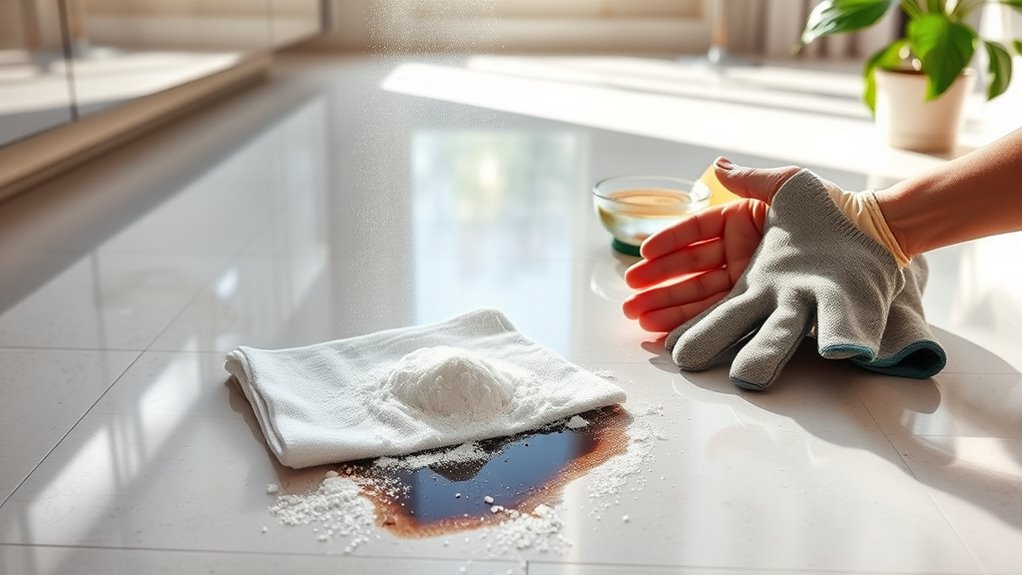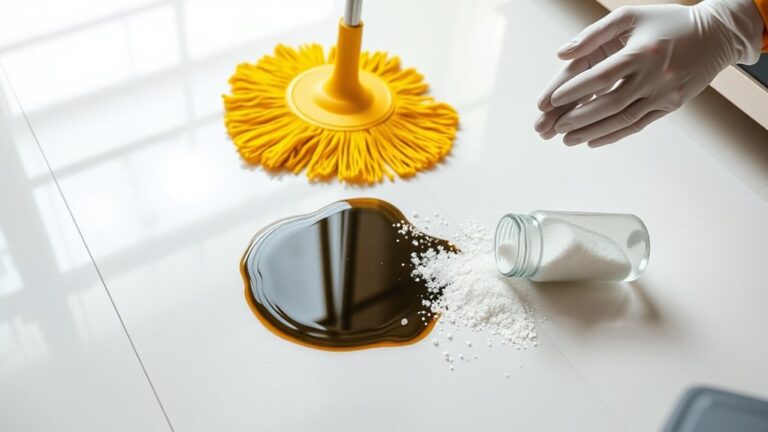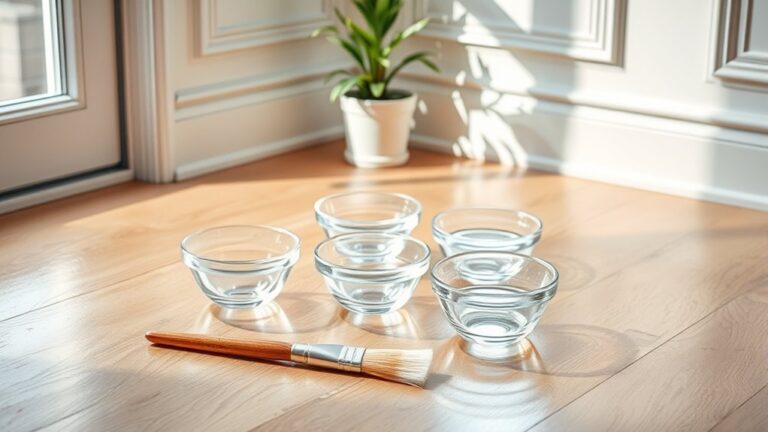First, assess the spill size and gather gloves, absorbents like cat litter, and a gentle cleaner. Sprinkle the absorbent carefully to soak up excess oil, then apply a mild detergent or enzyme-based cleaner suited for your floor. Scrub gently with a soft brush, focusing on edges without spreading the oil. Rinse thoroughly with warm water and dry completely using towels or airflow. Follow these steps closely, and you’ll be better equipped to handle oil spills safely and effectively.
Assess the Spill and Gather Supplies
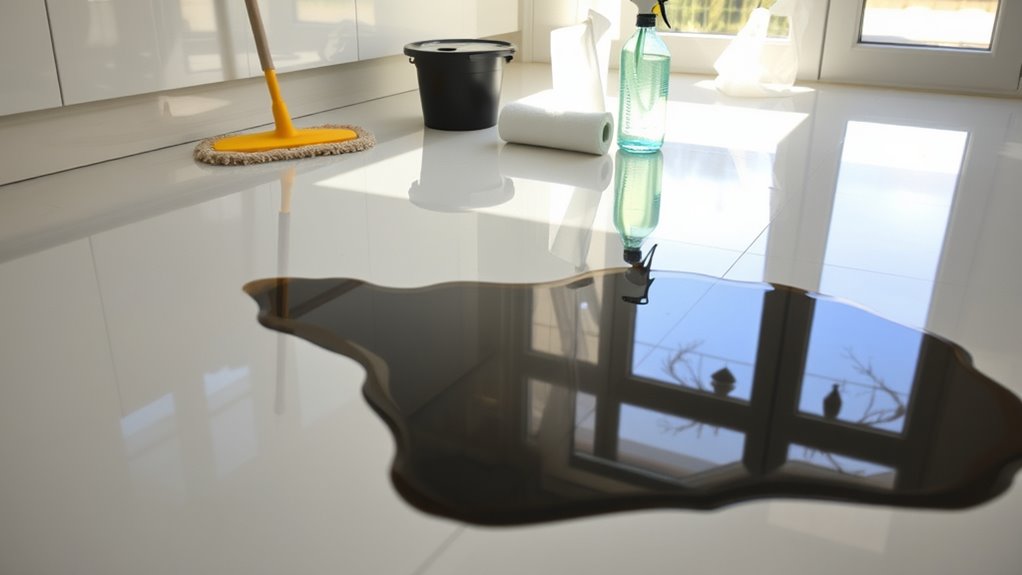
Before you begin cleaning, carefully assess the size and type of the oil spill to determine the appropriate materials you’ll need. Understanding the spill size is vital; a small drip requires different cleanup techniques than a large puddle. Measure or estimate the affected area to choose suitable absorbents and cleaning agents. Consider the oil’s viscosity and source, as some oils demand specific treatments. Having the right supplies on hand guarantees you can act swiftly and effectively, preserving your freedom to manage the mess without delay. Prepare gloves, absorbent pads, and cleaning solutions based on your assessment. This cautious approach minimizes damage and maximizes efficiency, letting you reclaim your space quickly while maintaining control over the cleanup process.
Absorb Excess Oil With an Appropriate Material
Once you’ve gathered the right supplies based on your spill assessment, the next step is to absorb the excess oil promptly. Choose absorbent materials suited to the spill’s size and surface—options like cat litter, sawdust, or commercial absorbent pads work well. Carefully apply these materials directly onto the spill, covering it completely to prevent the oil from spreading further. This step is essential for effective spill containment and minimizes the risk of slipping or further damage. Avoid pushing the oil around; instead, let the absorbent material soak it up naturally. Once absorbed, gently scoop or sweep up the saturated material and dispose of it according to local regulations. Acting swiftly and using proper absorbent materials empowers you to maintain control and freedom over your space after an oil spill.
Apply a Cleaning Agent to Break Down the Oil
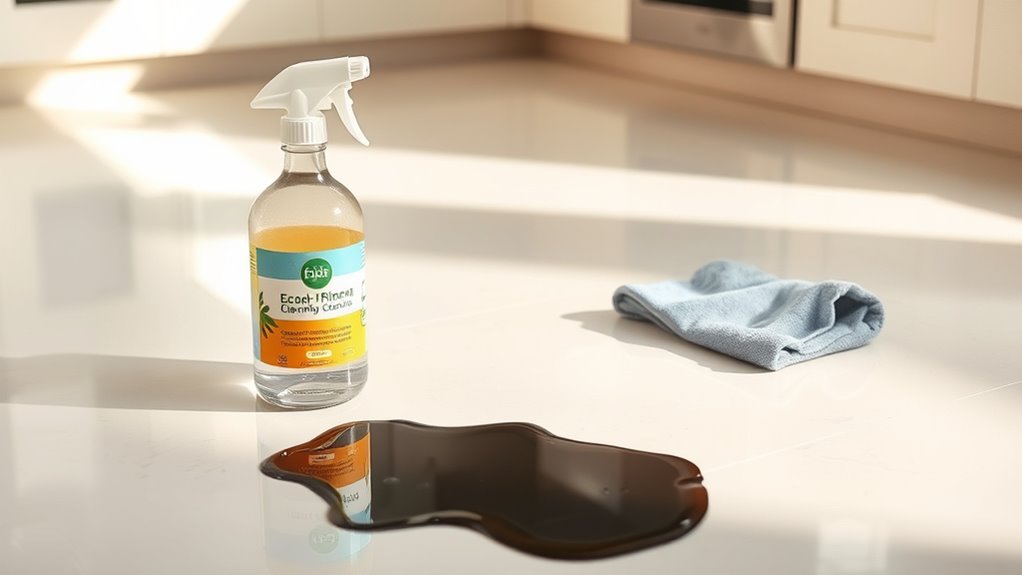
Select a cleaning agent designed to break down oil effectively without damaging your floor. Choosing the right cleaning agent is key to successful oil breakdown techniques. Here are four cleaning agent options to take into account:
Choose a cleaning agent that breaks down oil effectively while protecting your floor’s finish for best results.
- Dish soap with degreasing properties – safe for most floors and highly effective.
- Commercial oil-specific cleaners – formulated for tough oil stains.
- Baking soda paste mixed with water – a gentle, natural alternative.
- Enzymatic cleaners – break down oil molecules biologically, ideal for sensitive surfaces.
Apply the chosen agent sparingly, following product instructions. Avoid harsh chemicals that could harm your 床材 finish. Always test a small, hidden area first to verify compatibility. Using the proper cleaning agent allows you to maintain floor integrity while freeing your space from stubborn oil spills efficiently and safely.
Scrub the Area Thoroughly
After applying the cleaning agent, you’ll need to scrub the area thoroughly to break up and lift the oil from the floor’s surface. Start by choosing effective brushes suited to your floor type—stiff-bristled for concrete or softer ones for delicate surfaces. Use circular motions with consistent pressure to maximize contact without damaging your floor. Employ scrubbing techniques that focus on edges and corners where oil tends to accumulate. Avoid harsh scrubbing that could spread the oil further or scratch the floor. Take your time, working systematically across the spill area to guarantee complete coverage. Remember, thorough scrubbing is key to freeing your floor from oil’s grip and restoring your space’s freedom and cleanliness.
Rinse and Dry the Floor Completely
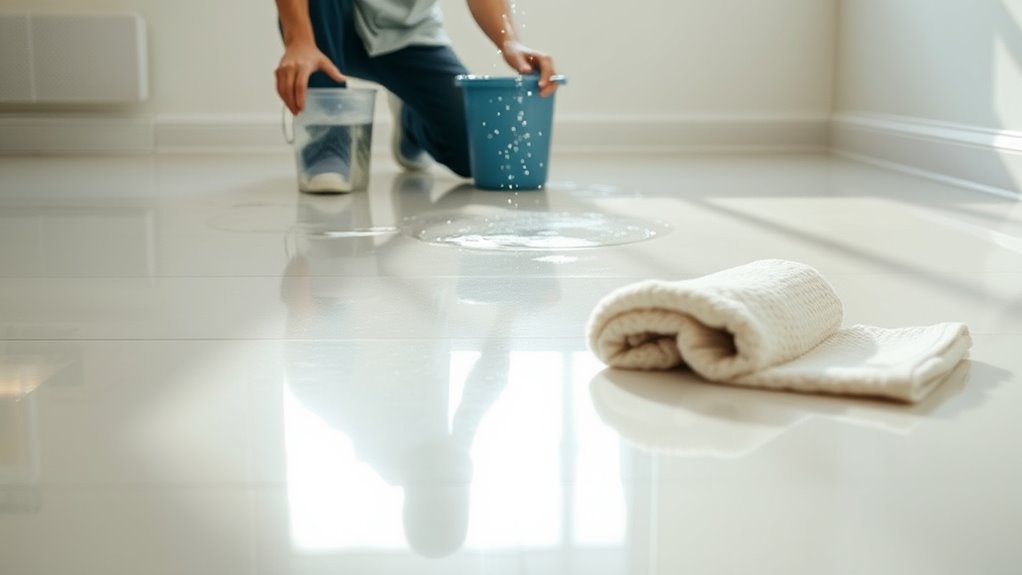
Flush the cleaned area thoroughly with warm water to remove any remaining cleaning agents and loosened oil residue. This step is essential to maintain floor safety and guarantee your cleaning techniques are effective. Follow these steps:
- Use a mop or sponge soaked in warm water to rinse the area completely.
- Change the rinse water frequently to avoid spreading oil back onto the floor.
- After rinsing, use dry towels or a microfiber cloth to absorb excess water.
- Allow the floor to air dry fully or use a fan to speed up drying.

